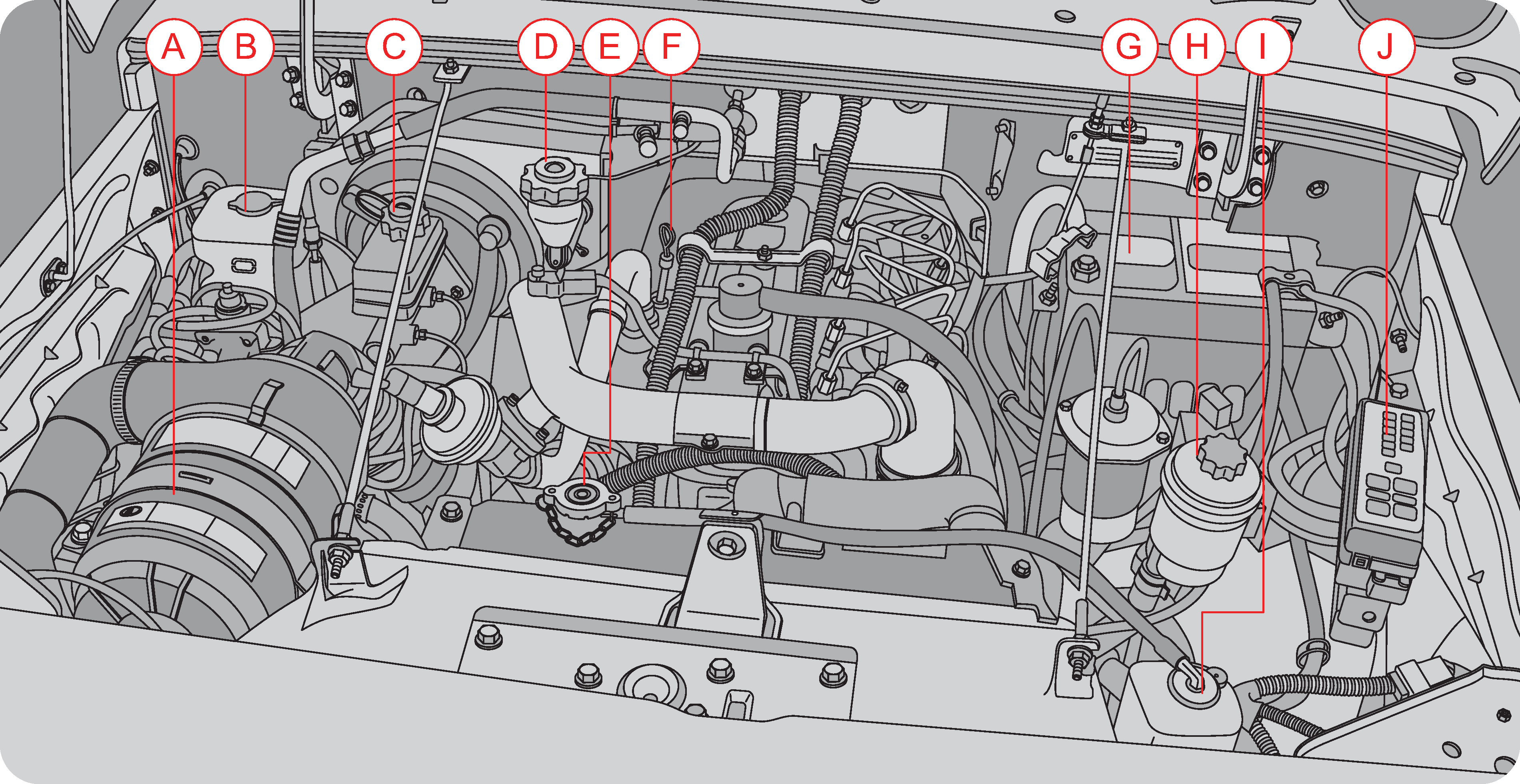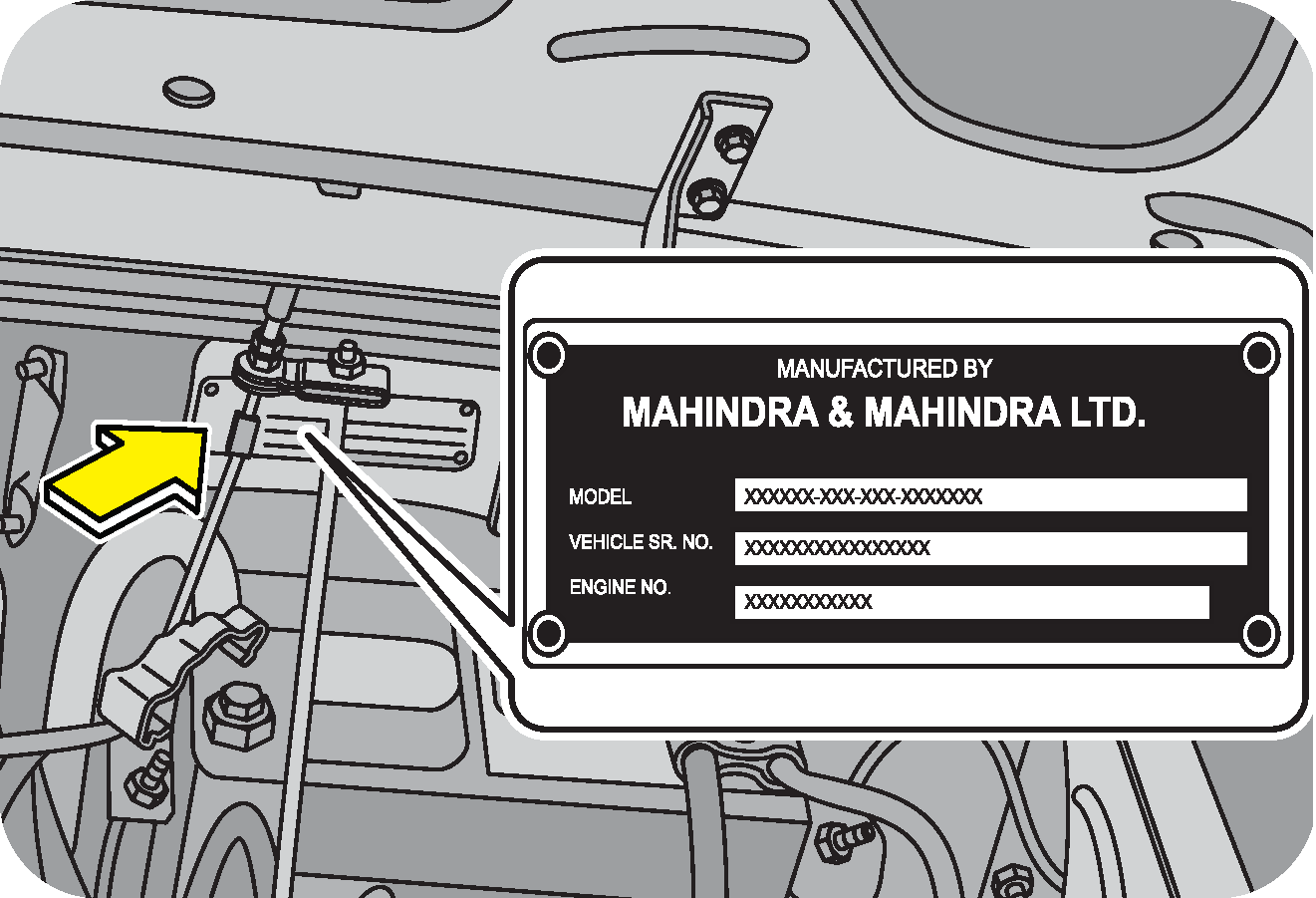The Driver Information System (DIS) is above the central AC vents. The DIS screen displays six categories of information when
the ignition is switched ON apart from the Mode and Set buttons.
|
• |
Distance Travelled (DT) |
|
• |
Average Fuel Efficiency (AFE) |
|
• |
Distance To Empty (DTE) |
| A |
Day |
F |
DTE/DT/AFE |
| B |
Time |
G |
Gear Indicator |
| C |
Date |
H |
Set Button |
| D |
Door Ajar Lamp |
I |
Mode Button |
| E |
DIS Error Symbol |
|
|
When the ignition is Switched ON, DIS initializes to the screen in which DIS was before ignition OFF (during the last ignition
cycle). Press the mode button (I) for 1 sec and release to scroll/cycle through the below information in the DIS:
|
• |
Distance to Empty (DTE) |
|
• |
Average Fuel Economy (AFE) |
Date, Day and Time
Introduction
The date, day and time will be shown on this area of the DIS. The time is in 12 hr format only showing hours and minutes and
the range is 01:00 to 12:59 along with am/pm.
The Date and Time will retain the values on every ignition cycle except when battery has been disconnected and reconnected
The day will be selected automatically based on the set date.
Procedure for Setting the Date and Time
The date and time can be set in ignition ON condition using the below procedure;
|
• |
During Ignition ON condition, Press "MODE" (I) and "SET" (H) button together for more than 2 sec, on release the DIS will
enter into clock and date setting mode |
|
• |
Hours will start blinking |
|
• |
Press "SET" (H) continuously or step by step to increment the Hours and other parameters |
|
• |
If the "SET" (H) switch is held for longer than 1 second, the digits increment at faster rate until released |
|
• |
AM/PM will toggle automatically while changing Hour |
|
• |
Press "MODE" (I), to confirm the Hours and move to next setting parameter, the parameters will cycle in the following order
for setting on pressing of "MODE" (I) button- |
Exiting Setting Mode
|
• |
If no knob is pressed for 10 seconds, the clock setting mode will be exited |
|
• |
Press the “MODE” button for more than 2 sec to exit from the clock/date setting mode |
Door Ajar
Introduction
The Door Ajar information is available for three doors,
The car symbol will appear only when any of the doors (mentioned above) are open and that respective door(s) will be shown
as open in the DIS.
Contact an Authorized Mahindra Dealer if the door ajar is not indicating or not turning ON.
Driving Time (DT)
Introduction
|
• |
This feature enables user to know the actual time taken to cover a trip excluding non-driving times (engine off time). |
|
• |
When Engine is ON, DIS will calculate the driving time. |
|
• |
The time will be calculated across the ignition cycles from the time the reset was done or Battery disconnected and reconnected |
Re-setting DT
While on the DT screen, press "MODE" button for more than 2 second and release to reset DT.
Contact an authorized Mahindra dealer if Trip duration is not updating.
Average Fuel Economy (AFE)
Introduction
The Average Fuel economy or efficiency or mileage is the last 30 km average mileage that the vehicle is driven.
Resetting AFE
|
• |
While on the AFE screen, press "MODE" (I) button for more than 2 second and release to reset AFE |
|
• |
AFE will show "---" for the first 1km after AFE is Reset or Battery disconnect and reconnect |
|
• |
After 1km, the real time AFE calculation will be displayed on the screen |
Distance To Empty (DTE)
Introduction
The distance to empty in kilometers is the information for the driver to be aware of the distance the vehicle can be driven
with the available fuel and the fuel economy that the vehicle displays at that instance.
The DTE update will be faster if the refueling quantity is greater than 6 liters else will be slow and happen while driving.
DTE will show "---" for the first 1km after the Battery is disconnected and reconnected. After 1km, the real time DTE calculation
will be displayed on the screen.
Current Gear Position
Introduction
It shows the current gear engaged information to the user on the DIS screen
The gear position will be shown only in the engine ON condition, and will be shown only and only when clutch is completely
released
If the gear is in neutral and the vehicle is moving, the gear position will be shown wrongly on the screen, not neutral
There is chance that if the clutch is pressed for a longer time while driving, than wrong gear would be displayed on the DIS
screen.
DIS Warning Symbol
Introduction
DIS Warning symbol will appear only when there is an error in the DIS or any feature is not working.
If the warning symbol appears, or appears and disappears, please contact an authorized Mahindra dealer.
 LX / SLE / SLX / ZLX
LX / SLE / SLX / ZLX



































































































































































